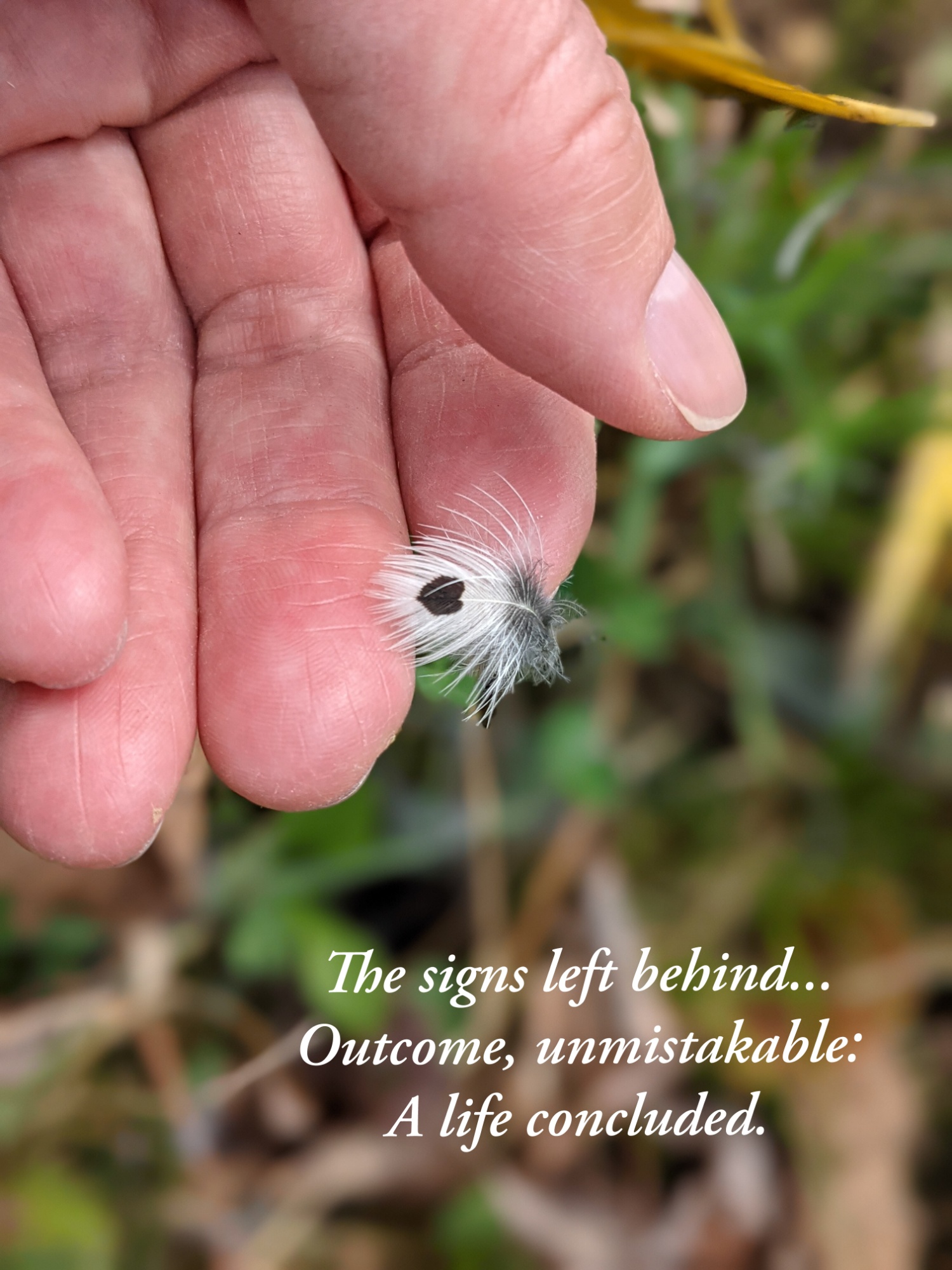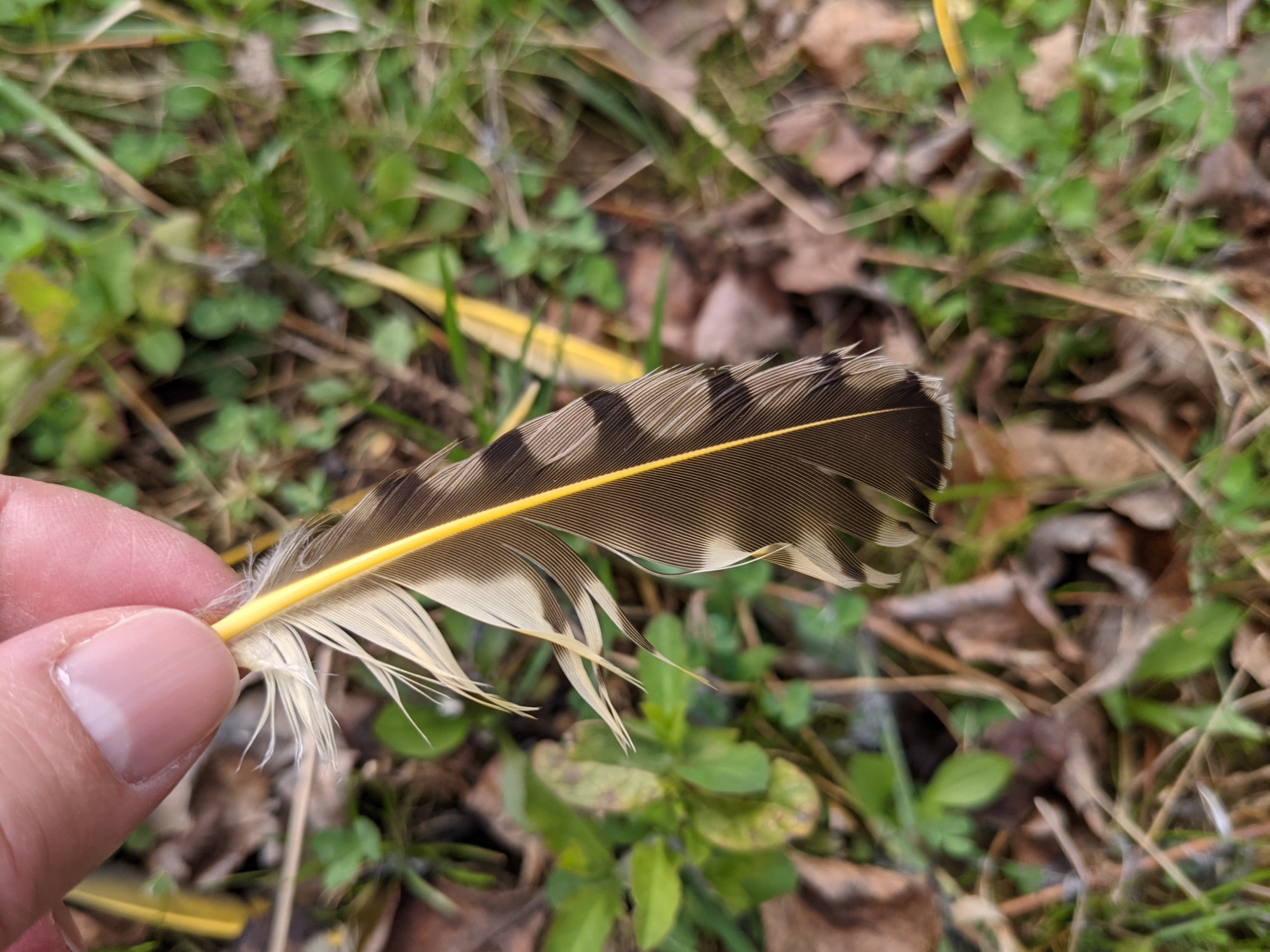
Among the growing grass littered with tiny flowers, where it’s quiet and dewy, violence occurred. All that was left as testament to the life of a rabbit was bits of velvety brown fur; of a songbird, bright yellow feathers, strewn upon the ground.
The rabbit population seems healthy here: as I walked out to get photos, a rabbit bounded away into a wooded area. Run, rabbit, run! The fox population also seems strong – one strolled casually down our driveway just the other evening. Rabbits are a natural food source for foxes, and the one killed in the pasture was very likely a fox’s meal…the scat left at the scene looks like a match.

The bird, on the other hand, was likely killed by a cat. There are many feral and non-feral cats that spend the day stalking prey like mice and voles and baby rabbits, songbirds, lizards, and other animals small enough for them to catch. If only the cat would focus solely on rodents! Because we feed the birds and have left natural vegetation like bushes and trees to grow, our land hosts a wonderful variety of birds. It also means that cats allowed to roam outdoors have the opportunity to kill songbirds.
The feathers were unusual, so I took a few for reference. After reviewing my bird guide for the area, I concluded that the feathers likely belonged to an oriole, probably a Baltimore Oriole, and either a young male or adult female (which are less-brilliantly colored than the bright orange adult males). I have seen a few in the trees here over the years, but only rarely…so it’s a shame to know there’s now one fewer.

Bird populations are declining, and with an estimated 3 billion fewer birds in North America than were present in 1970 (a 29% decrease), we can all take action to help at least slow the trajectory of this dramatic decline.
First, keep your cats indoors. According to the American Bird Conservancy, they’re the number one threat to birds; in the United States alone, outdoor cats are estimated to kill 2.4 billion birds each year. Cats can be provided enrichment, like access to secure enclosures (such as catios) where they can have an outdoor experience without being able to harm birds. Indoor cats are safer and live longer, too.
Second, consider how you can create a safe and nurturing environment for wild birds: leaving trees and vegetation (including tall grasses) for birds to nest in and to escape to, as needed; not using herbicides or insecticides; offering nourishing food and clean water sources; and spreading the word about how birds need our help and ways to do it. Find more ideas here: 10 Things You Can Do For Birds.

Comments are closed.